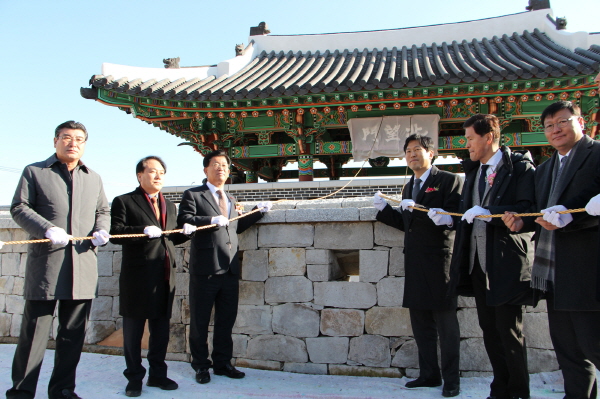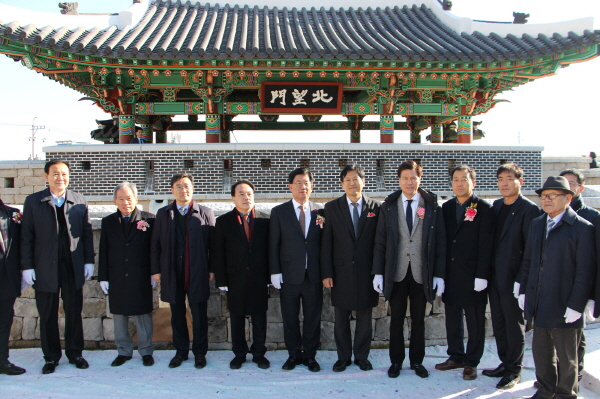A precious cultural property
As the Bukmangmun, one of four gates of the Naju Eupseong (fortress) in Naju City, was restored in January this year, reconstruction of all of gates to the regional fortress was completed in 101 years after they were destroyed under the Japanese colonial rule in 1917. Having initiated the project of reconstructing these gates in 1993, the municipal government of Naju City completed the project in 25 years.

With strategic importance in southwestern region of Korea, the Joseon Dynasty built the fortress in the middle of 15th century. Having been designated as the Historic Relic No. 337, the Naju Eupseong is surrounded by a stone wall in length of 3.7 kilometers with an area of 972,600 square meters. In addition to four gates in its southern, northern, eastern and western parts of the fortress wall, it had a number of buildings, including the Geumseonggwan (Regional Tangible Cultural Property No. 2), Jegeumheon, and Moksanaeah (Cultural Property No. 132), the governor’s office.

Being a historic and cultural city, Naju has successfully preserved and restored a number of other historic remains besides the Naju Eupseong and traditional buildings in it. To name several of them, they include the Micheon Lecture House (Monument No. 29), built in commemoration of the great scholar Misu Humok (1595-1682) and his philosophy, the Naju Confucian Temple (Tangible Cultural Property No. 128) that enshrines 27 memorial tablets including that of Confucius, the Jeongsuru (Cultural Material No. 86), a gate to the government office during the Joseon Dynasty built in early 17th century, the Yeongmojeong (Monument No. 112), a pavilion built in 16th century, and the Byeokryujeong (Tangible Cultural Asset No. 184), a villa of a nobleman built in the 17th century.

Besides, the regional economy of the City is enjoying dynamic growth since late 2014 when Korea Electric Power Corporation (KEPCO) moved its headquarters to the Naju Innovation District together with some of its partner companies.

